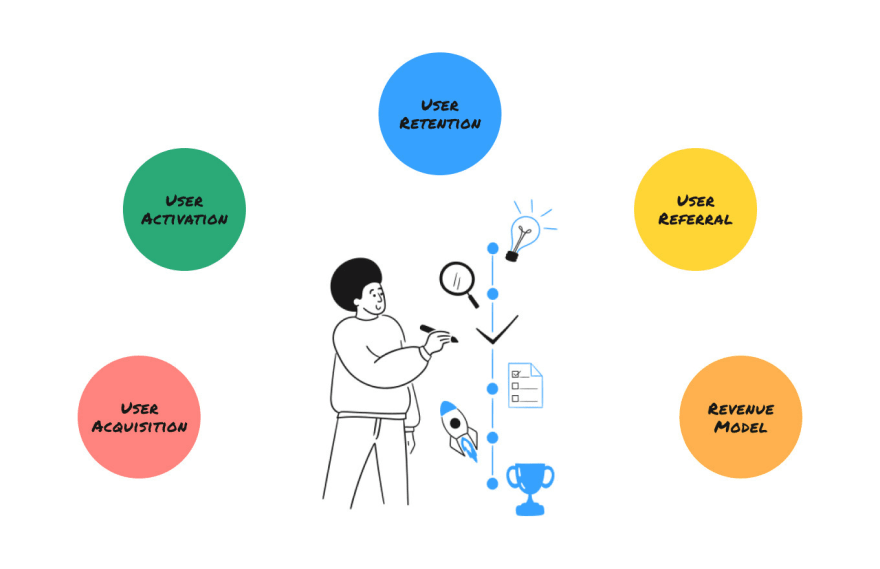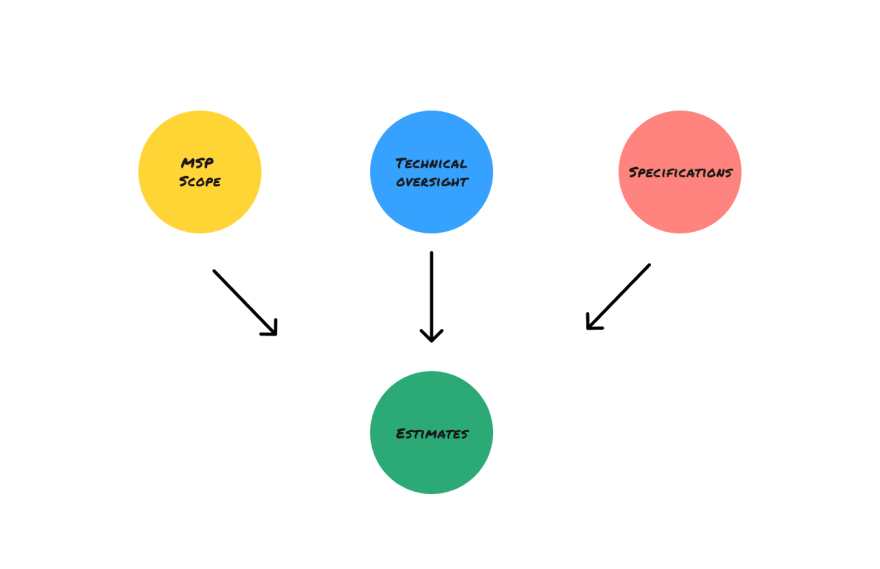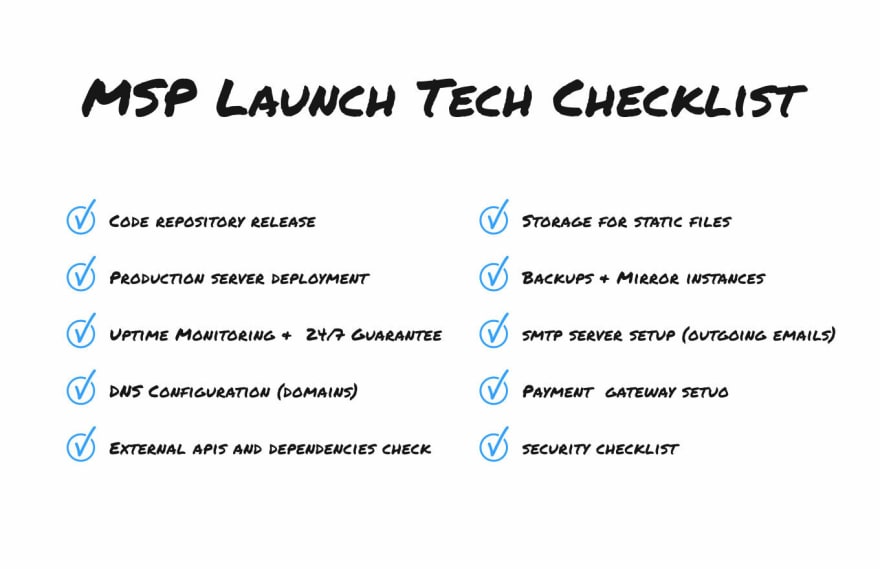An Interest In:
Web News this Week
- April 19, 2024
- April 18, 2024
- April 17, 2024
- April 16, 2024
- April 15, 2024
- April 14, 2024
- April 13, 2024
Agile Software Development Life Cycle Phases for SaaS Founders
The original article was written by SoftFormance
You have probably heard the term Agile a lot recently. This practice is quickly getting more and more popular in the IT sector, mainly when talking about software development.
In fact, according to the 15th Annual State Of Agile Report, during the last 15 years, there has been a steady increase in the number of companies adopting Agile practices and processes.
Theres a clear reason for this popularity, and its that Agile allows business owners and developers to find the most flexible and effective way to deliver software in the shortest terms.
Business owners choose Agile to save time and money and prioritize effective communication and cooperation within all teams within the organization.
When you start working on a new project, time is your most precious resource, and theres no way you would want to waste it. You probably dont want your team of testers to sit around waiting for developers to finish working on software.
The key here is to distribute the resources you have at hand so that every part of the team is engaged in the process at the same time.
That is the reason why at SoftFormance, we have been practicing the software development life cycle Agile when working with all our clients. This practice allows us to increase the efficiency of our work both within our company and with our clients.
If you want to finish your software development project on time, on budget, and without stress, read on.
What is Agile?
Agile is all about adaptiveness to change. As the trends in the market are changing quickly, business owners must be able to react to them instantly to stay competitive and attract new clients.
That is when Agile comes at hand adopting this practice allows us to succeed even in the most challenging environment and find a way to preserve the companys resources.
The key Agile practices include Adaptive Software Development, Lean Software Development, Extreme Programming, Crystal, Kanban, Scrum, and others.
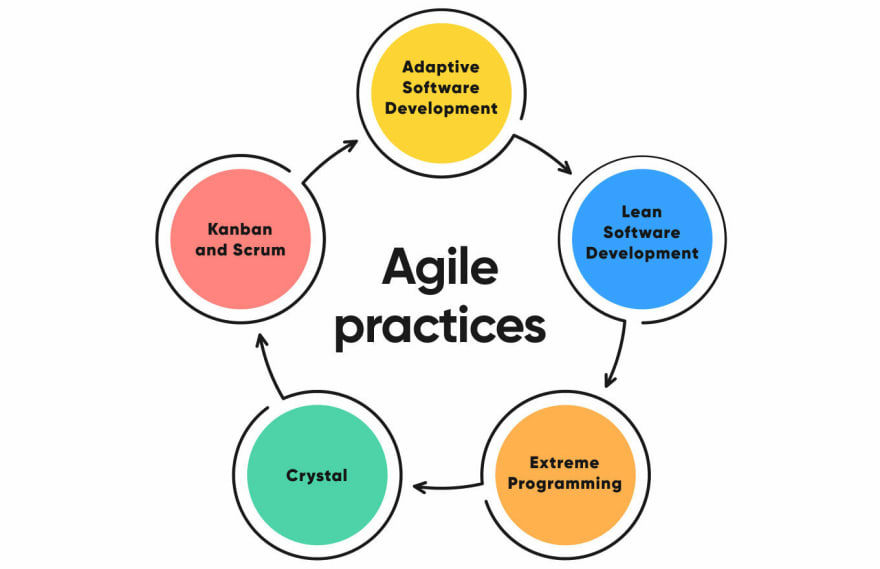
The choice of the methodology depends on the development agency and the requirements of the client. Still, all of them are flexible, iterative, and incredibly effective in providing great results in the shortest terms.
Agile stands out among other approaches because it focuses on people doing the work and how they cooperate. Its all about teamwork, self-organization, and collaboration.
According to the Agile Report, the adoption of Agile practices in IT teams has increased customer satisfaction, positively impacted business values, and helped achieve business objectives.
Types of Agile Methodologies
There are several types of Agile methodology to fit every kind of project and help every business owner achieve their goals. Still, everything is based on the principles of the Agile manifesto.
According to it, no matter what methodology you choose, you should always prioritize individuals and interactions, collaborate with customers, create working software, and be responsive to change.
In the 2021 report, Scrum ranked as the most used Agile approach, with 66% of people using it. Other Agile approaches include Adaptive Software Development, Lean Software Development, Extreme Programming, Crystal, Kanban, and others.
Lets talk about each of them.
Scrum
As mentioned in the 2020 Scrum Guide, Scrum is a framework that helps people, teams, and organizations generate value through adaptive solutions for complex problems.

A team is very important in Scrum. It usually consists of one Scrum Master, one Product Owner, and the Developer. Within this team, there are no hierarchies. Everyone has an equal impact on the final result, and everyone is focused on the Product Goal.
The Agile methodology steps are divided into sprints that usually last up to two weeks. Each sprint is an iteration that brings a raw draft project to a finished one gradually.
Each member of the Scrum Team has all skills necessary to participate in every sprint. Moreover, they are able to self-organize and self-manage, which means that they decide what to do, when, and how.
What are the responsibilities of each team member?
Developers create usable working software during each sprint.
The Product Owner is responsible for developing and communicating the Product Goal, communicating Product Backlog items, ordering them, and ensuring that the process is transparent and understood by everyone.
The Scrum Master helps everyone understand what Scrum is, its principles, and its philosophy. This person is also accountable for the teams effectiveness.
Kanban
Another popular Agile methodology in SDLC is Kanban. According to Kanbanize, Kanban is a method that helps you visualize work, maximize efficiency, and improve continuously. All work is represented on kanban boards. It allows you to optimize your work process across the teams and track the progress.

Initially, Kanban was introduced as a manufacturing system, but it moved to software development teams.
Since all work processes are presented on the Kanban Board and shared with all teams, Kanban requires thorough interaction and transparency to bring the best results.
Extreme Programming (XP)
The next of the phases of agile methodology focuses on teamwork, feedback, communication, and customer satisfaction. Just like Scrum, XP also uses sprints.
There are the characteristics when XP is appropriate, as described by Don Wells:
Dynamically changing software requirements
Project risks caused by tight schedules or if the system is a new challenge for a team
Small groups of programmers
Ability to create automated unit and functional tests
Extreme Programming normally involves 5 Agile methodology phases: planning, designing, coding, testing, and listening.
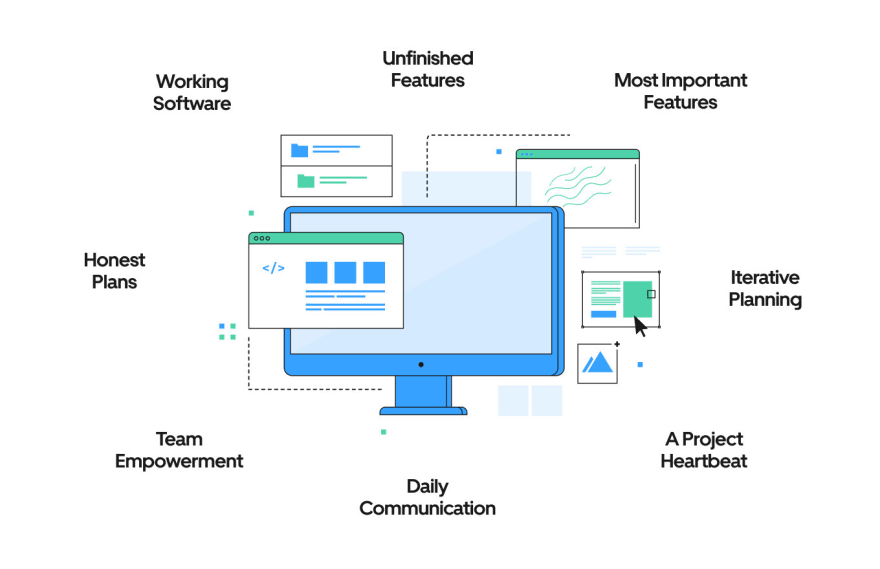
The roles associated with XP are as follows:
Customers
Programmers
Trackers or managers
Coaches
This Agile methodology is not universal, but if it suits your projects, XP will help you create stable, well-performing systems, a clear and concise code, save time, reduce documentation, and ensure high customer engagement and satisfaction.
Adaptive Software Development
Apart from the big three methodologies (Scrum, Extreme Programming, and Kaban), some programmers also use ASD (Adaptive Software Development).

Its one of the earliest agile methodologies. ASD focuses on collaboration with the clients and encourages developers not to be afraid of uncertainties and interesting traits in future projects.
According to Jim Highsmith and Sam Bayer, the creators of ASD, the only way to achieve success with complex software projects is to continuously learn throughout the project while not sticking to rigid plans.
During this Agile practice, there are three steps for Agile methodology: speculation, collaboration, and learning.

The first phase, speculation, is also known as the planning phase. The next stage is all about collaboration: between developers and end-users of software and within the teams. Finally, during the learning stage, everyone involved in the process continuously learns as they are working towards the end result.
Lean Software Development
Lean Software Development (LSD) is another Agile practice commonly used by developers. It is based on optimizing the development time and resources, eliminating waste, and delivering exactly what the product needs.

It is also known as the Minimum Viable Product (MVP) strategy. Its a product with a limited number of features that solves at least one issue of your target customer.
What are the main strengths of the LSD methodology?
Firstly, its streamlined approach allows developers to deliver a more functional product in less time.
Secondly, it allows the team of programmers to make decisions, and it positively influences morale and productivity.
Finally, LSD eliminates unnecessary activity and helps save costs.
Still, its not suitable for every project because Lean Software Development depends on the team involved. Thus, its not as scalable as Scrum, for example.
Theres also a lot of documentation on LSD, and many business owners would rather avoid it to prevent development mistakes.
Crystal
Finally, the last Agile methodology well talk about is Crystal. This framework focuses on individuals and their interactions rather than on tools and processes.
This methodology has two main principles:
Teams can determine how to optimize their work on their own
Since every project is constantly changing and requires a unique approach, only the team can determine how to deal with it.
The main strengths of this methodology are that it allows the teams to find the way of work that will be the most effective, it promotes transparency and open communication, and it allows them to adapt to changes quickly.
However, the lack of documentation can be confusing for some business owners and developers, and Crystal is not suitable for projects that require thorough planning.
Now that we have talked about the main Agile methodologies lets briefly discuss the main principles behind the Agile Manifesto and then move on to the Agile software development phases.
Principles behind the Agile Manifesto
There are 12 main principles of Agile, and they are described in the Agile Manifesto. Lets summarize them here.
Customer satisfaction through early and continuous delivery of software.
Changes are always welcomed.
Delivering working software in the shortest timescale.
Developers must collaborate with business people daily.
Projects should be built around motivated individuals.
A face-to-face conversation is key to effective communication.
Working software is the measure of progress.
Agile promotes sustainable development.
Attention to technical excellence and effective design.
The simpler, the better.
Self-organizing teams are the most effective.
Teams reflect on their progress regularly to adjust their behavior and tune in with other teams.
Any business owner who wants to create their software and use Agile methodology should follow these 12 steps religiously.
They guide the work of the teams, help them focus on the important things, and manage even the most complicated projects.
Agile Software Development Life-Cycle (SDLC)
Before I talk about sprint cycles and the four Agile ceremonies, lets recollect the key software development life-cycle stages. We have already talked about them in detail in the New Product Development article, so lets summarize the key Agile project phases here.
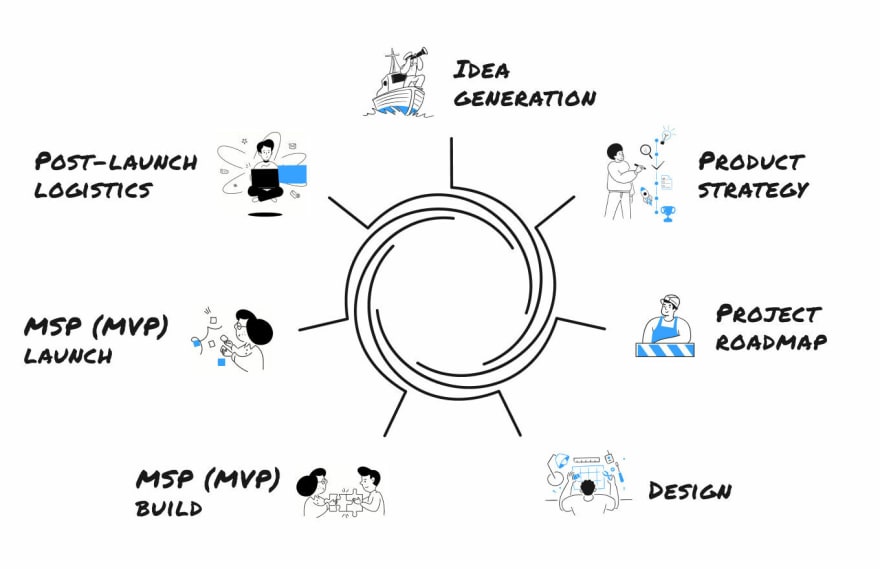
Idea generation
This is the very first stage of the Agile product life cycle. Your goal here is to answer the three main questions:
What is the problem?
Who has this problem?
Why is this a problem?
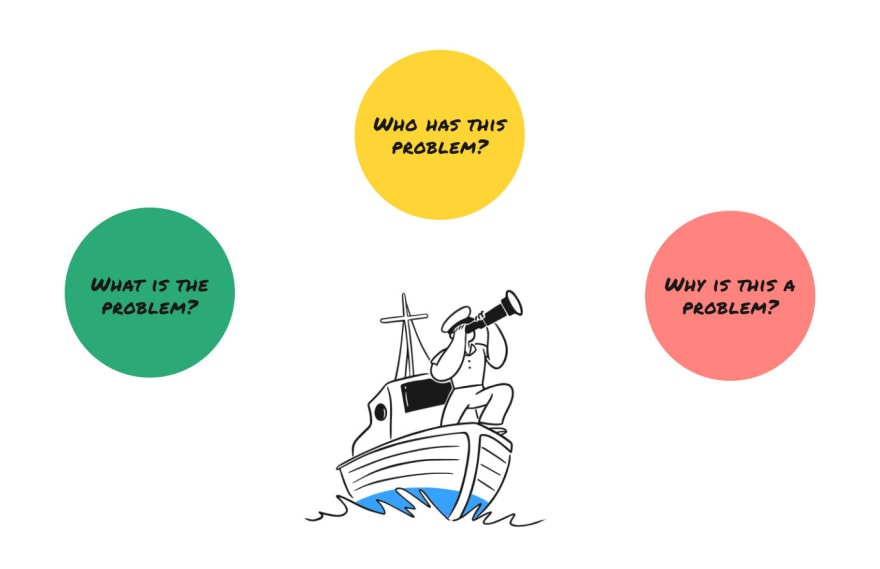
During this step of Agile cycle, you need to find a problem that can be solved with your software and choose among two main approaches: PIDD and Software Safari.
If you want to learn more about these approaches and how to generate valid ideas, read this piece.
- Product Strategy
The next of the Agile phases is building your product strategy.
Before developing your software, you need to have a detailed product strategy that includes data about user acquisition, user activation, user retention, user referral, and revenue model.
When building an app and creating new software during the Agile project life cycle, you need to know how you will acquire new users, make them stay and use your product frequently, and ensure that your revenue model is effective.
- Project Roadmap
The next of the Agile SDLC phases is project roadmapping.
If you want to launch your product on time, within budget, and of proper quality and scope, you need a project roadmap.
It consists of the three main steps: Technical Oversight, Specification, and Estimates.
During the Technical Oversight step, you determine whether the project is technically doable.

Then, you create a list of specifications and explain what should be done to the developers.
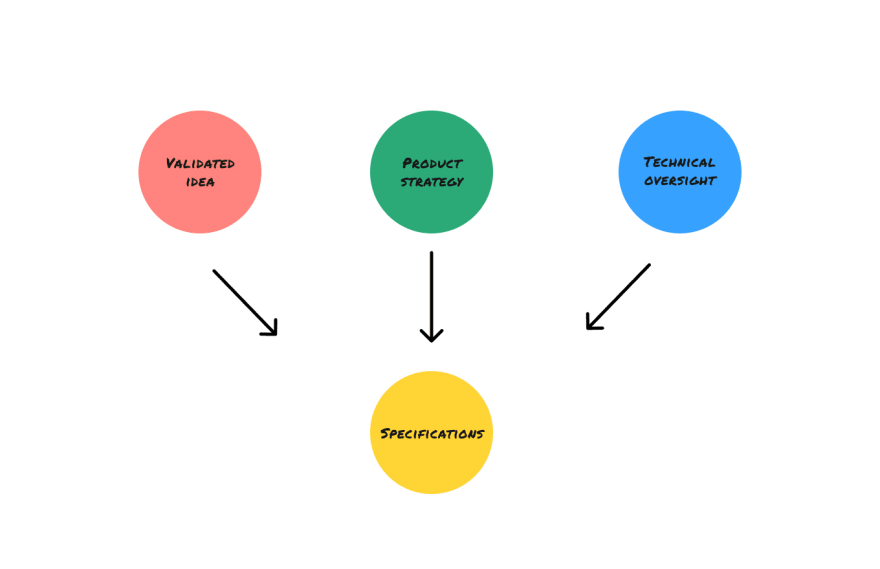
Finally, you estimate the timeline, budget, and milestones of your project.
- Design
The next step of Agile lifecycle is UI/UX design. In short, product design is how your software looks and works from the users perspective.
It is a multi-step process, so if you want to learn more about it, we have a detailed guide for you.
- MSP (MVP) Build
When youre creating a software product, you dont build full-featured software for the first release. Instead, you create a simpler version of it that can be sold. After that, you keep on adding more and more features.
This first small release is called a Minimum Sellable Product, or an MSP. If you want to learn more about it, read the material we have prepared for you.
- MSP (MVP) Launch
During this stage of Agile life cycle, you launch your new MSP. There are key steps to be followed, mainly:
MSP Launch Tech Checklist
MSP Launch Marketing Checklist
The fist users
- Post-Launch Software Logistics
Even when your software has been developed, its not the final stage. After the launch, you need to focus on fixing bugs and adding new features to your product.
During the post-launch software logistics stage, you should spend time on support & maintenance of your product and on attracting new clients.
If you want to learn more about these seven steps, read this detailed guide.
At SoftFormance, both the design and development stages follow a clear Agile methodology, mainly the four Agile ceremonies, which we will talk about next.
Agile Ceremonies (The Four Stages)
Agile, mainly Scrum, has four main ceremonies that bring it to life and help achieve the most out of the development process.
These ceremonies are known as:
Sprint Planning
Daily Stand-Up
Sprint Review
Sprint Retrospective

These ceremonies are different, but they have the same goal to bring teams together, help them collaborate more effectively, and get things done quickly.
Why do we need these four ceremonies?
Well, they help organizations be more flexible and adaptable to change. As a result, these ceremonies can help you succeed.
They allow you to plan work in small portions, which is great if you need to change directions frequently, adjust, and correct some mistakes.
Lets talk about each ceremony in detail.
Sprint Planning
This is the first Agile SDLC methodology, and it ensures that every member of the team understands the sprint goals.
By the end of the sprint planning, the development team must have a clear understanding of what they will be able to complete by the end of the sprint. This is also known as the sprint goal.
If you want to complete the Spring Planning step successfully, make sure to focus on collaboration, be aware of your teams pace, focus on the product backlog, and divide user stories into small tasks to distribute among the development team.
Daily Stand-Up
The main goal of daily stand-ups is to unite the team and bring everyone together. This time is used to share the plans for the day and talk about issues that may have arisen.
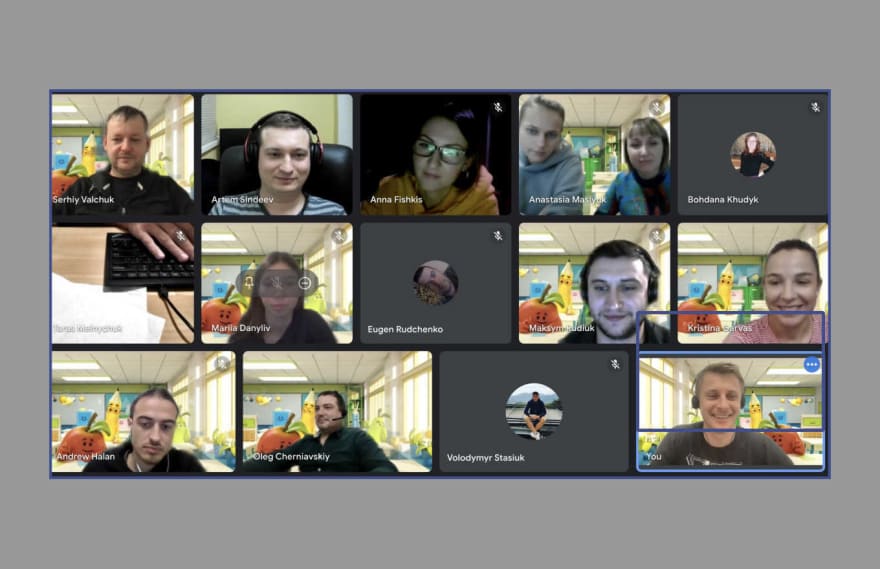
These meetings usually last up to 15 minutes and are held at the same time every day.
During daily stand-ups, the Scrum Master should address all the questions and issues that slow down the workflow s and even change the development process if needed.
Sprint Review
After the sprints, it is time to review the work and gather feedback from people outside of the team. This process helps build trust with the stakeholders and improve the development process in the future.
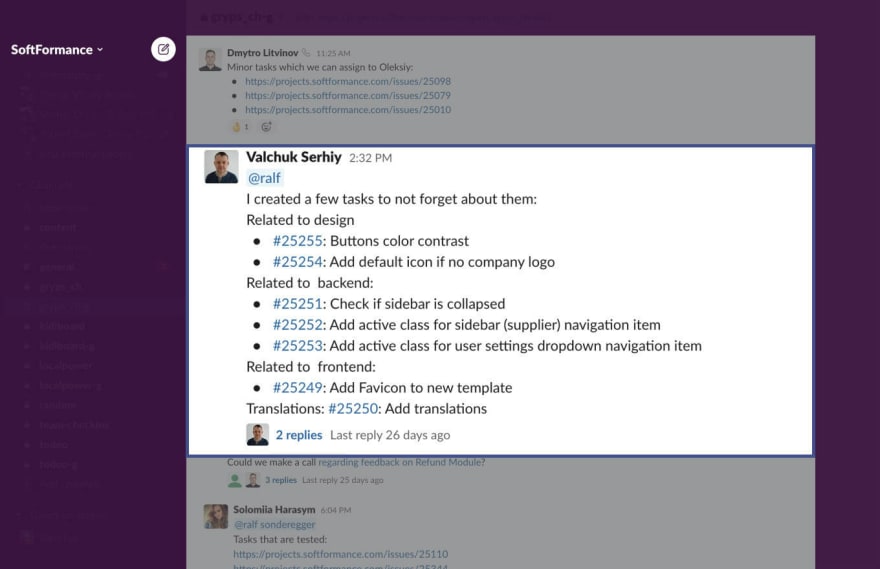
It is important not to showcase any incomplete work during this stage. Moreover, you should focus not only on product functionality but also on customer value, user experience, and business value.
Sprint Retrospective
The final ceremony is a sprint retrospective. During this stage, you analyze what has been done and try to identify what needs to be improved the next time. Sprint retrospective helps mitigate possible risks and errors.

This step should help the team clearly understand what mistakes have been made and how to avoid them in the future. During the sprint retrospective step, the team generates solutions to these problems and creates an action plan.
Why choose a remote Agile team?
Most Agile software development cycle processes are performed by remote, or outsourced, dedicated teams. Business owners prefer to work with third-party agencies rather than employing in-house development teams for various reasons.
For example, outsourcing your software development helps you manage your finances more wisely, save time, and choose among thousands of talented experts from all over the world.
We have already covered the advantages and disadvantages of outsourcing in this article, but lets recollect why you should choose a remote Agile team.

Controlled costs
Outsourcing gives you the ability to control the expenses and decide in which area to invest more.
Access to the global talent pool
Outsourcing allows companies to hire Agile development teams from all over the world and choose among numbers of talented experts.
Reduced delivery time
A large Agile outsourcing team would allow you to finish the project much faster than it would take for the in-house team.
Increased efficiency
Outsourcing allows you to delegate specific tasks to experts who specialize in the services you require. As a result, it boosts productivity because each employee is focused on what they do best.
Focus on core business activities
Another benefit of outsourcing is that it allows you to focus on the area you are good at and delegate the rest of the tasks.
Increased staffing flexibility
Hiring an external development team helps you reduce or extend your workforce easily at any time, choose among great talent, and ensure that each project is delegated to a professional.
Access to innovation
By expanding your workforce with talented external developers, you welcome new ideas and solutions for your business that havent been proposed yet.
Better risk management
Outsourcing also reduces the risks of making the wrong decision when hiring someone long-term. With outsourcing, you can choose among new talents, test their skills and expertise, and choose the best one for your business goals.
If you want to learn more about each of the benefits, outsourcing risks, and how to mitigate them, read this blog post.
Wrapping Up
In this guide, you have learned about the Agile development cycle and how to apply Agile methodologies to develop working software in the shortest period of time. This practice allows your team to cooperate efficiently, be adaptable to change, and cope with unexpected changes and scenarios.
No matter what Agile practice you choose Scrum, Kanban, Extreme Programming, or Crystal you will instantly see the positive changes to the development process because it will be more flexible, with less documentation and strict rules, and more collaborative.
If you have an idea to create your software product or a mobile app, and your goal is to have a quick and predictable result we are ready to help you.
Our SoftFormace team has been using Agile philosophy for years to build our clients software, and the results show that it is by far the most effective way to achieve the greatest results quickly.
However, if youre not yet ready to start working on your software idea and have some questions or remarks feel free to comment down below, and we will respond to you shortly.
Original Link: https://dev.to/kateryna_pakhomova/agile-software-development-life-cycle-phases-for-saas-founders-89d
Dev To
 An online community for sharing and discovering great ideas, having debates, and making friends
An online community for sharing and discovering great ideas, having debates, and making friendsMore About this Source Visit Dev To


